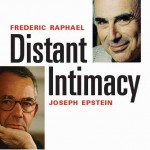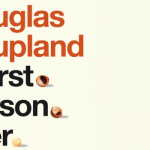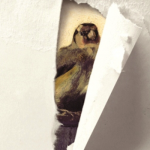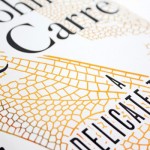Hatchet Job 2014 | Previous years | Manifesto | Press
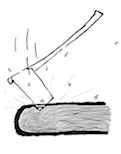
Craig Brown on The Odd Couple by Richard Bradford
THE MAIL ON SUNDAY
IMAGINE that we had all trooped into Skyfall to find it a mish-mash of all the old James Bond movies, with a couple of freshly shot scenes, and the producers had just trusted we wouldn’t spot it.
This was how I felt when reading The Odd Couple by Richard Bradford. It is a triumph of ‘cut and paste’ – indeed, such a triumph that by now Bradford must be able to press the Command button and C for Copy simultaneously in his sleep.
Back in 2001, Richard Bradford, Professor of English at the University of Ulster, wrote a biography of Kingsley Amis, who had died six years before. Naturally, quite a bit of it was about Amis’s lifelong friendship with Philip Larkin.
Four years later, Bradford wrote a biography of Philip Larkin. Naturally, quite a bit of it was about Larkin’s lifelong friendship with Kingsley Amis.
And now, seven years after his biography of Philip Larkin and 11 years after his biography of Kingsley Amis, Bradford has come up with a new book, The Odd Couple, about the lifelong friendship of – yes, you’ve guessed it – Philip Larkin and Kingsley Amis.
Well, I say new, and it is being marketed as new, and it has certainly been reviewed as new by all the leading critics and pretty enthusiastically, too. It looks new, and it smells new. It has a new cover and even a new publisher.
But Bradford has taken us all – and presumably his new publishers, too – for a ride. And he might have got away with it, but for the diligence of Inspector Brown.
Come rain or shine, I have been plodding the literary beat for 35 years, but never before have I come across quite such a shameless exercise in marketing old rope.
Professor Bradford is no slouch. He gets going on his copying and pasting before the book has even begun.
On the second page of his Introduction And Acknowledgements, he quotes three lines from a poem of Larkin’s and adds, ‘Thereafter, the poem becomes the occasion for reflections on how such gatherings prompt him to perceive life as largely a catalogue of equally pointless routines, variously customised to reinforce the assumption that something might matter.’ Now, ladies and gentlemen of the jury, I would ask you to turn to page 18 of the same author’s 2005 biography of Philip Larkin. You will find he quotes the same three lines, followed by exactly the same sentence of commentary: ‘Thereafter, the poem becomes the occasion for . . .’ etc etc.
And that’s just for starters. Once the introduction is over, there’s no stopping him. The lengthy second paragraph of Chapter 1 is lifted word for word from page 21 of Professor Bradford’s biography of Kingsley Amis. The following paragraph, too, is exactly the same, although for some reason he has gone to the trouble of changing ‘Amis’s mother’s sister, Dora, went mad, officially’ to ‘Amis’s aunt, Dora, his mother’s sister, went mad, officially’.
The next paragraph is copied, word for word, and so is the next, and the next, and the next, and the next, and the next. To cut a long story short, apart from the first paragraph, which seems to be new, the next four-and-a-half pages are all copied directly from the Amis biography.
In the next paragraph, he switches to Larkin, so he is obliged to go to the effort of copying from his other biography. ‘Larkin usually recalled his childhood with a mixture of feigned forgetfulness . . .’ it begins, as does the third paragraph of Chapter 1 of the Larkin book.
The subsequent eight pages are all cribbed – lock, stock and barrel – from it, too. There then follows a bit of gooey literary grouting (‘Already one becomes aware of parallels between Larkin’s and Amis’s childhood experiences. . .’) presumably to link the two sources of the copying and make them look brand-new.
Two paragraphs later, it’s back to copying from the Amis book: the next three pages are all lifted straight from it. This is followed by a brief linking sentence (‘Like Amis, at school Larkin found the opportunity to explore and account for aspects of his own personality that were stifled by life at home’) before normal business is resumed: apart from one other brief compare-and-contrast linker, the following nine pages, right up to the end of the first chapter, are all pilfered, paragraph for paragraph, sentence for sentence, word for word, comma for comma, from the Larkin book.
And so it goes on, all the way to the end: copy, copy, copy, paste, paste, paste. There are even some passages – their initial meeting at Oxford, for instance – that have been reproduced in all three books: the Larkin biography, the Amis biography and now this ‘new’ biography of their friendship.
Is self-plagiarism an offence in academia? I suppose it is better than plagiarising others, but I wonder what the professor would say if his students were to produce essays which, on closer inspection, turned out to be copied from essays they’d given in earlier?
I suppose Professor Bradford might argue, albeit a trifle sheepishly, that an awful lot of people simply won’t notice, either because they haven’t read his earlier books or because they’ve forgotten what was in them. Certainly, none of my fellow critics seems to have sniffed the distinctive, musty smell of second-hand goods: in fact, they have all, to a man, treated the book as brand-new.
It might be the case that, in the years since their deaths, we have been bombarded with so much stuff about Amis and Larkin – authorised biographies, vast volumes of letters, memoirs with titles like The Larkin I Knew, critical essays, and so on and so forth – that we now find it impossible to recall what we know, what we used to know, what we don’t know and what we might just be able to remember we once knew, if we really try.
There were a number of details in The Odd Couple that I found amusing or interesting, only to find, on closer investigation, that I must have read them before, on their earlier outings.
For instance, I was amused by the way Bradford wrote on page 274 about Amis’s stint as an academic in Nashville: ‘There is a joke about a man being shown the various rooms available in Hell. The best seems to involve a group of condemned souls chatting agreeably and drinking cocktails, albeit while standing knee deep in something resembling faeces. The man chooses this one, only to be told that the weekly break is now over: “Back on your heads.” ’
Very funny indeed, but then a little bell rang in the back of my head and before long I had found the very same joke, told in exactly the same words, on page 238 of his Amis biography.
There are, I should add, one or two things new to The Odd Couple, among them Larkin’s letters to his girlfriend Monica Jones, many of them grudging or resentful towards Amis.
These were, however, published in their own volume a couple of years ago, so any Larkin fan should already be familiar with them.
But there is one cheery little detail that, as far as I know, Bradford hasn’t told before: apparently, the Amis family once had a lodger called Nicky de Peche Cradock, who went to bed with both Kingsley and his oldest son, Philip, who was then aged 14.
It turns out that Nicky de Peche Cradock was the daughter-in-law of the flamboyant TV chef Fanny Cradock. This is just the sort of detail I like. But is it worth £20? Nearly, but not quite.
This article originally appeared in The Mail on Sunday on 08/12/12
Read all reviews for The Odd Couple by Richard Bradford
The Omnivore on Twitter | The Omnivore on Facebook | Sign up for The Omnivore Digest

